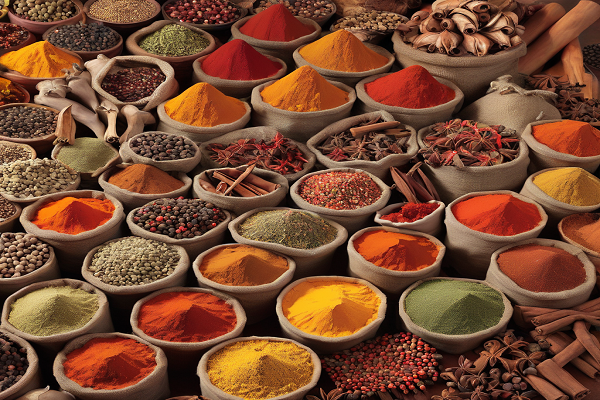Middle East and Africa Spices and Seasonings market size was USD 544.96 million in 2023 and the market is projected to touch USD 831.03 million by 2032, at a CAGR of 4.8 % during the forecast period. Spices are artificial or natural compounds which improve flavour and fragrance in foodstuffs. They come from plants, seeds, fruit or rhizomes hence being part of any culture that deals with cookery anywhere on this planet. Spices play a vital role in traditional cooking in the Middle East and Africa, bringing depth and richness to meals while also being a reflection of the rich cultural diversity in that part of the world. The regional market for flavours and condiments in the Middle East and Africa represents the general trading and use of different types of taste agents like spices and herbs.
Market Overview: The Middle East and Africa spices and seasonings market has been experiencing steady growth over the years, driven by factors such as increasing consumer demand for exotic flavors, rising disposable incomes, and a growing awareness of the health benefits associated with spices. By 2032, industry analysts forecast that this market will reach unprecedented heights, propelled by evolving consumer preferences and advancements in food technology.
Key Trends Driving Growth:
- Rise of Health-Conscious Consumers: In recent years, there has been a notable shift towards healthier eating habits, with consumers seeking natural and organic ingredients. This trend is expected to fuel the demand for spices and seasonings that offer both flavor and health benefits, such as turmeric, cumin, and cinnamon.
- Demand for Authenticity and Regional Flavors: Consumers are increasingly drawn to authentic culinary experiences that celebrate the diverse cultural heritage of the Middle East and Africa. This translates into a growing demand for region-specific spices and seasonings, including za’atar, harissa, berbere, and ras el hanout.
- Innovation in Product Development: As the market becomes more competitive, spice manufacturers are focusing on innovation to differentiate their products. This includes the development of unique flavor blends, convenient packaging solutions, and value-added products like organic and premium spices.
- Expansion of Distribution Channels: With the rise of e-commerce and the increasing urbanization of the region, spice manufacturers are exploring new distribution channels to reach a wider consumer base. Online retail platforms, specialty stores, and supermarkets are expected to play a crucial role in driving sales growth.
Challenges and Opportunities: While the outlook for the Middle East and Africa spices and seasonings market is largely positive, it is not without its challenges. Factors such as fluctuating raw material prices, supply chain disruptions, and regulatory hurdles can impact market dynamics. However, these challenges also present opportunities for industry players to innovate, adapt, and explore new markets.
Conclusion: In conclusion, the Middle East and Africa spices and seasonings market is poised for dynamic growth and transformation by 2032. As consumers continue to seek out new flavors and culinary experiences, the demand for high-quality spices and seasonings will only continue to rise. By staying attuned to evolving consumer preferences, embracing innovation, and leveraging the rich culinary heritage of the region, industry players can capitalize on the abundant opportunities that lie ahead in this vibrant market.
Contact Us:
Mob : +91 9319642100
Noida One Tower Sec 62 Noida 201301
Sales : sales@organicmarketresearch.com
Website : https://www.organicmarketresearch.com















